ASRock Shows DeskMini GTX/RX, using Micro-STX Motherboard with MXM Support
by Ian Cutress on January 18, 2017 3:00 PM EST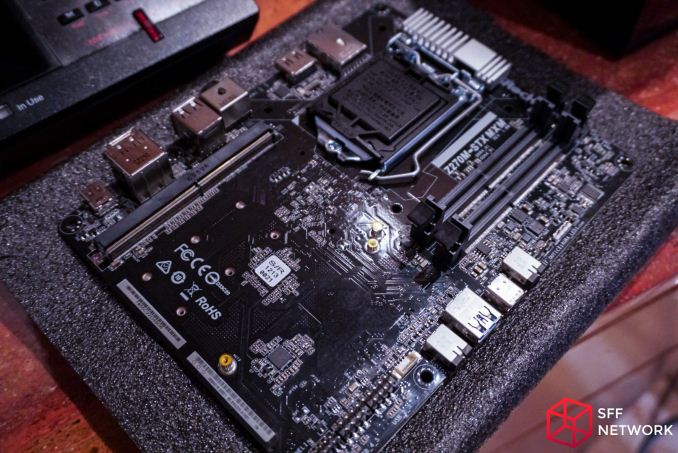
One of the recurring themes in my discussions with motherboard manufacturers over the past several years is one of introducing differentiation to products and through that, new form factors. When mini-STX was shown by Intel last year as a different form factor focusing just on the processor rather than PCIe lanes, we saw the launch of several small-sized PCs, mainly for embedded functions, that could leverage a full desktop-class CPU and socket. As always with CPU-only products, some users request a little more graphics oomph, so insert ASRock’s new ‘micro-STX’ type of motherboard and mini-PC that uses MXM-type graphics.
Unfortunately our trip to ASRock at CES was curtailed due to other meetings overrunning, but it was interesting to note that ASRock was at the show formally with a suite, rather than just casually taking coffee meetings the previous two years that I had been. So all our pictures in this piece are from the Small Form Factor Network, and many thanks to them.
The mini-STX form factor is based around a 5-inch by 5-inch motherboard design, which gets you enough space for a socket, some memory and some IO. With this micro-STX motherboard, ASRock is clearly going at length to support more: the MXM module bay takes up the whole second half of the motherboard, and one key thing to note here is the socket area.
On the left-hand side, where we would normally expect to see the IO, we have Intel’s recommended socket area marked. Normally this is left near-blank to account for coolers and such, but ASRock as engineered the rear IO right up to the socket itself, and using low profile IO ports to allow a cooler to fit. Because of the way mini-STX platforms work with few power phases, these are solely above the socket as not to interfere with to the left of the socket.
On the front side of the board, the chipset is nowhere to be found. That’s because it is on the back, along with the CR2032 battery and three M.2 ports. Because of the chipset support, all three are PCIe 3.0 x4 capable, with spacing for 2260 and 2280 sized M.2 ports. For good measure, there’s also an M.2 WiFi port.
Front functionality comes through a USB 3.0 Type-A, a USB 3.0 Type-C (ASRock in their sign claim this is USB 3.1 and Thunderbolt 3, however I cannot see an ASMedia ASM1142/ASM2142 nor an Alpine Ridge controller for this), and two audio jacks from the Realtek ALC283. The front uses an Intel I219-V gigabit Ethernet controller, two USB 3.0 ports, an HDMI port, HDMI 2.0 port (via MCDP2000), a DisplayPort adaptor, a mini-DP port, and a DC-In jack.
It’s worth noting that the specifications list also has two SATA ports on the description, but like the TB3 controller, I can’t see them on the pictures, front or rear.
As a system, the 2.7-liter DeskMini GTX/RX will feature a Core i7-7700K using an Intel stock cooler (so don’t expect much in the way of overclocking), support for up to 16GB of DDR4-3200 SODIMM (not sure why it’s not 32GB, perhaps z-height?), a 128GB Samsung 961 M.2 SSD, and an MXM Type-B graphics card: either a GTX 1060 for the GTX model, or an AMD RX card for the RX version. The PSU is rated at 220W, which can limit options.
Personally, I’d prefer a solid copper cooler on there for a Core i7, but a Core i5/i3 would do OK with the stock cooler.
Prices and release date are unknown.
Source: SFF Network


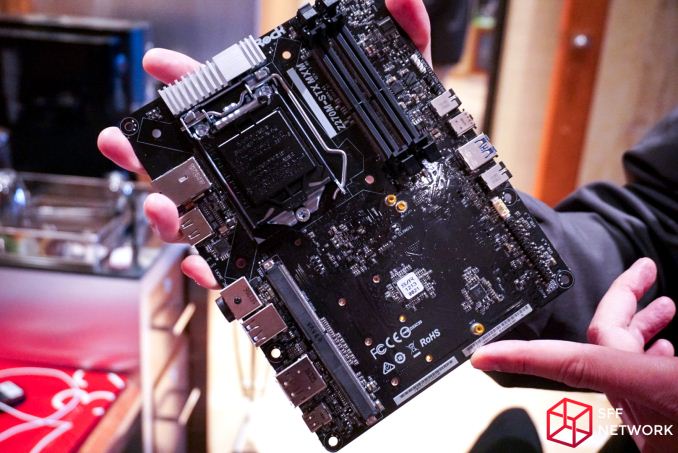
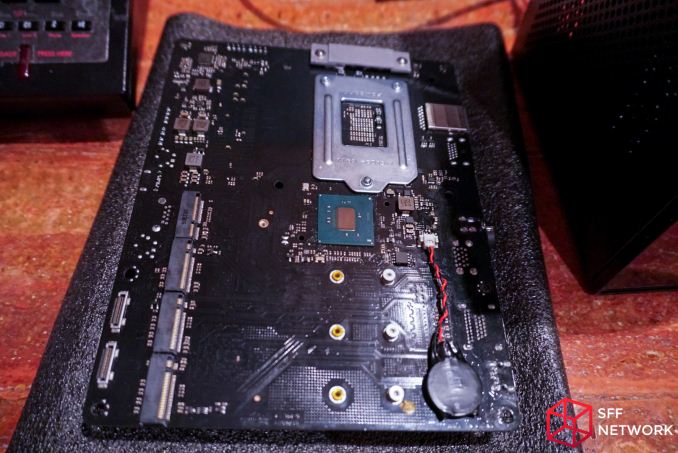
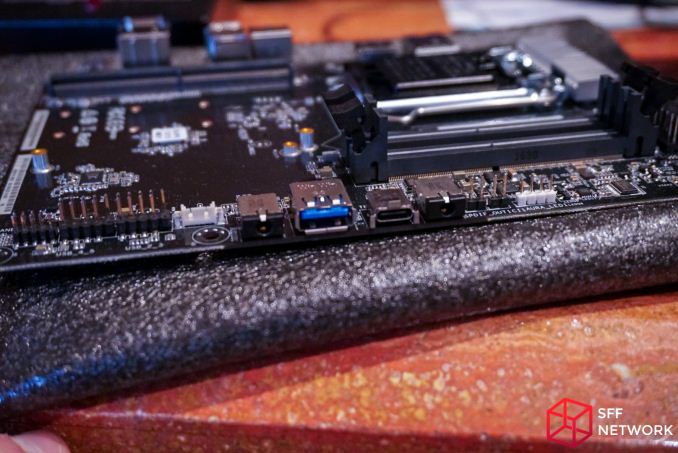
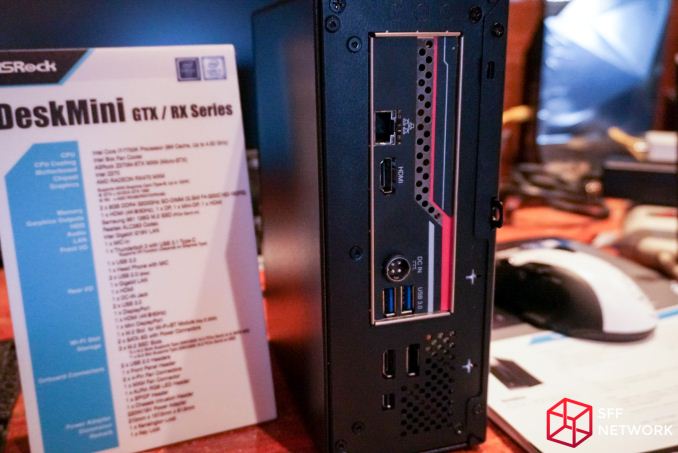
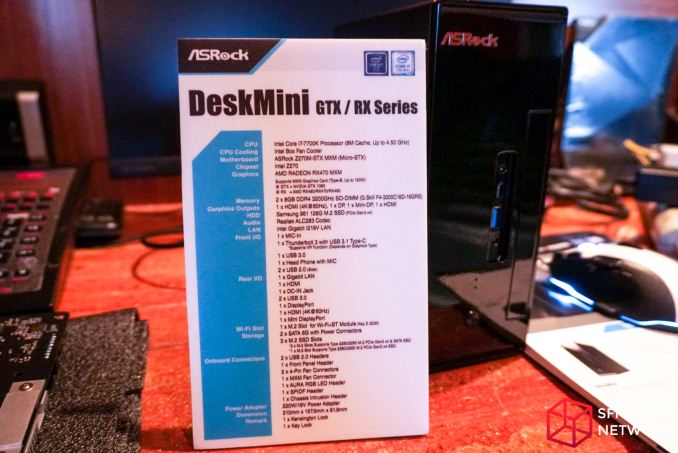














33 Comments
View All Comments
Lolimaster - Thursday, January 19, 2017 - link
High end AMD APU's pretty much kill this attemps.If AMD wanted. they could release a 1536SP+4c/8t 125w Ryzen based Raven Ridge APU. Or a 2048-2304SP one using the 7nm.
BrokenCrayons - Thursday, January 19, 2017 - link
The trouble with APUs and similar Intel non-Iris iGPUs isn't reall a lack of graphics processing power. There's a much more substantial bottleneck in contending for limited access to relatively slow system memory. Whereas modern GPUs with their own memory have a big dedicated pipe (even the lowly GTX 950 has over 105 GB/s), iGPUs end up dealing with less total bandwidth and contending with the CPU plus other components for a slice of that smaller pie. That can have adverse effects on the texture sizes, maximum playable resolutions, and everything else regardless of how powerful the iGPU is. Intel's eDRAM is tiny, but offers 50 GB/s of dedicated bandwidth to mitigate the problem. Modern texture compression can help too, but that only gets you so far before you end up starving the GPU cores. Then there's the problem of a shared thermal budget and close proximity of numerous hot running CPU cores that would otherwise be on an entirely different IC somewhere else on the motherboard.Besides that, the current top end AMD A10 has 512SP so though it's a pretty good iGPU, it's not competitive with a MXM 1060. We'll have to wait and see what Ryzen brings to the table, but I think even with a node shrink to 14nm, there's just not going to be a big enough leap to make a Ryzen APU into a GTX 1060 killer even whent hat 1060 is crammed into a MXM card in a small form factor case.
Valantar - Friday, January 20, 2017 - link
7nm? Sure, in 2019 or 2020. Have fun with your APU in 2-3 years. I guess you'll be playing Super Mario Run on your phone until then?Also, 125W is low for anything supposed to perform well with a mid-range GPU plus a 4c8t CPU on board. Remember that the more densely you pack your heat generating components, the harder it becomes to keep them all operating within reasonable temperatures. Besides, you'd still need a rather huge cooling solution for this. Nvidia has a decent efficiency lead on AMD (for now), but a laptop GTX 1060 + a 45W i7 should be comparable to this thermally. Laptops with this need pretty hefty coolers - and that's with _two_ sizeable dies across which to run heatpipes. With just one die, this becomes significantly harder.
I'm not saying I'm against this - not at all, I'd love for AMD to make a high-end APU like this. I just don't see it as quite feasible yet.